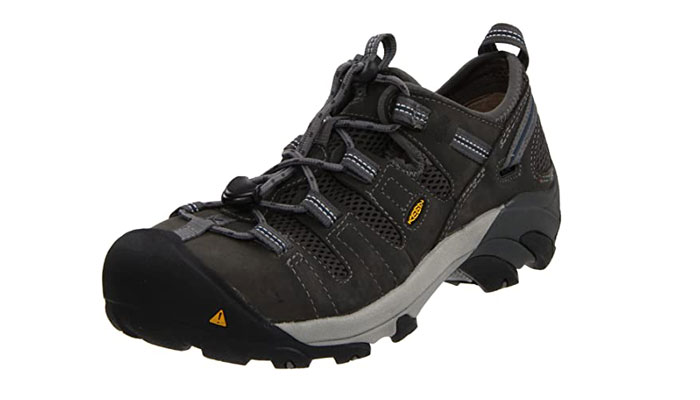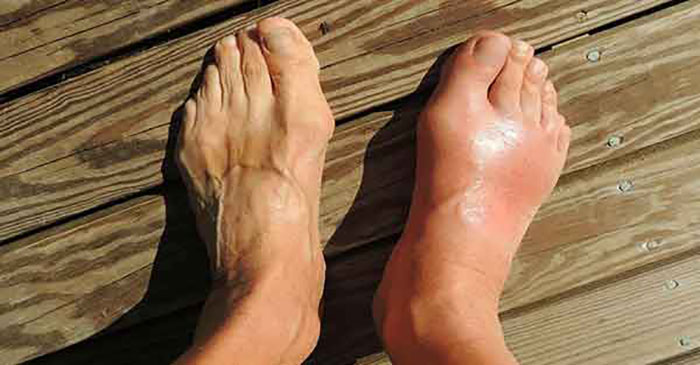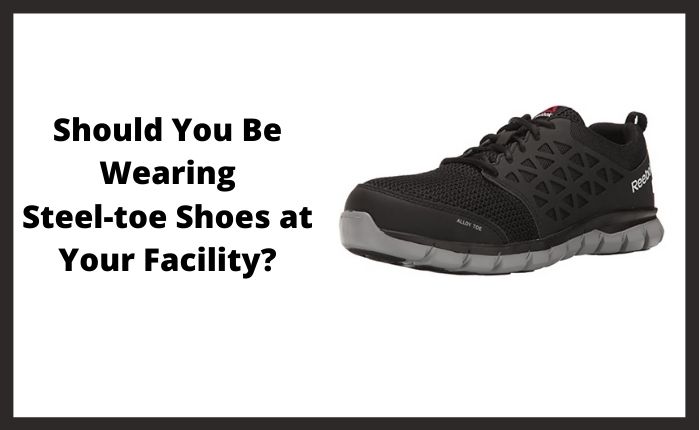Finding the right shoes to walk in at work is of primary importance. Unfortunately, once in a while, whether accidentally or otherwise, we end up with pretty bad and sometimes inappropriate shoes. This begs the question, should you be wearing steel-toe shoes at your facility?
If you work in a warehouse, industrial sites or airport, there’s one thing we can all agree on; you certainly need protective shoes. This ensures you don’t get incapacitated in case of accidents.
But get this; not everyone who works in industries and other hazardous environments needs steel-toe boots. Maybe all you need is composite toe shoes. These ones offer sufficient protection but without the additional weight of the steel toe varieties.
If you work in the sales department, in the accounting office, and in other less dangerous places, you don’t need to stress yourself with steel toe protection. However, anytime you are heading down the active work zones, make sure to properly protect yourself.
What Makes a Good Steel Toe Boot?

There are a few requirements steel toe boots must meet to be acceptable for workplaces. First, look for an OSHA stamp. In fact, some companies will insist that your boots bear this stamp. It represents the best protection standards against electric shock, piecing, and falling objects.
After OSHA, ASTM (American Society for Testing Materials) comes in as the next best seal of approval. The last one is ANSI certification. If a boot has any of those seals, you can rest assured that it is of the highest professional standards.
1. Setting off metal detectors
If you work in an airport, steel toe boots will get the metal detector buzzing every time you walk through the scanner. In most cases, you would be required to step aside and remove them for inspection.
If you also work in places with metal detectors, you might want to look into alternative work shoes. Let’s talk a bit about those options.
2. Steel toe boots alternatives
Since steel toe shoes have a few setbacks. First, they pack quite a lot of weight. And if that’s your everyday walking shoe, imagine how tired you will be at the end of a busy day. Secondly, if the steel toe cap is not properly placed, it could dig into your feet causing unwanted injuries.
The best alternative composite toe boots. These are supremely comfortable and lightweight for long walks. Even better, they still possess the same durability as steel toe types. You can check out our review of the most durable shoes for more outstanding choices.
Common Foot Problems Associated With Steel Toe Boots

Steel toe boots are not without problem; especially those that were poorly made. Nevertheless, here are some common issues that you have to expect:
Blisters: blisters are a common problem with boots-especially if they don’t fit well. Try and look at military movies, you’ll understand what we are talking about (despite the fact that they lack steel toe ends).
Corn and Calluses: because of frequent rubbing and chuffing, the side and top of your feet will develop thick corns and calluses.
Neuroma: Morton Neuroma is the sharp pain felt in the ball of the foot. The experience is similar to standing on the ground with sharp pebbles.
The solution to these problems is simply picking the right shoe size. Don’t buy an extremely bigger boot hoping that it would expand in the future. If this happens, check out ways in which you can break in boots to create more room for toe wiggling.
Wrap up
If steel toe boots are a requirement at your workplace, you have no choice but to wear them. However, just because the rules state so doesn’t mean you need to comply. For instance, those with feet swelling will find boots to be quite a huge problem.
Where possible, ask your superiors if you can wear composite or alloy toe boots instead of a steel toe. This way, you can be productive at work and at the same time have perfectly healthy feet. Check out our coverage of reliable house shoes for some options to wear while indoors.
Related Resources:

